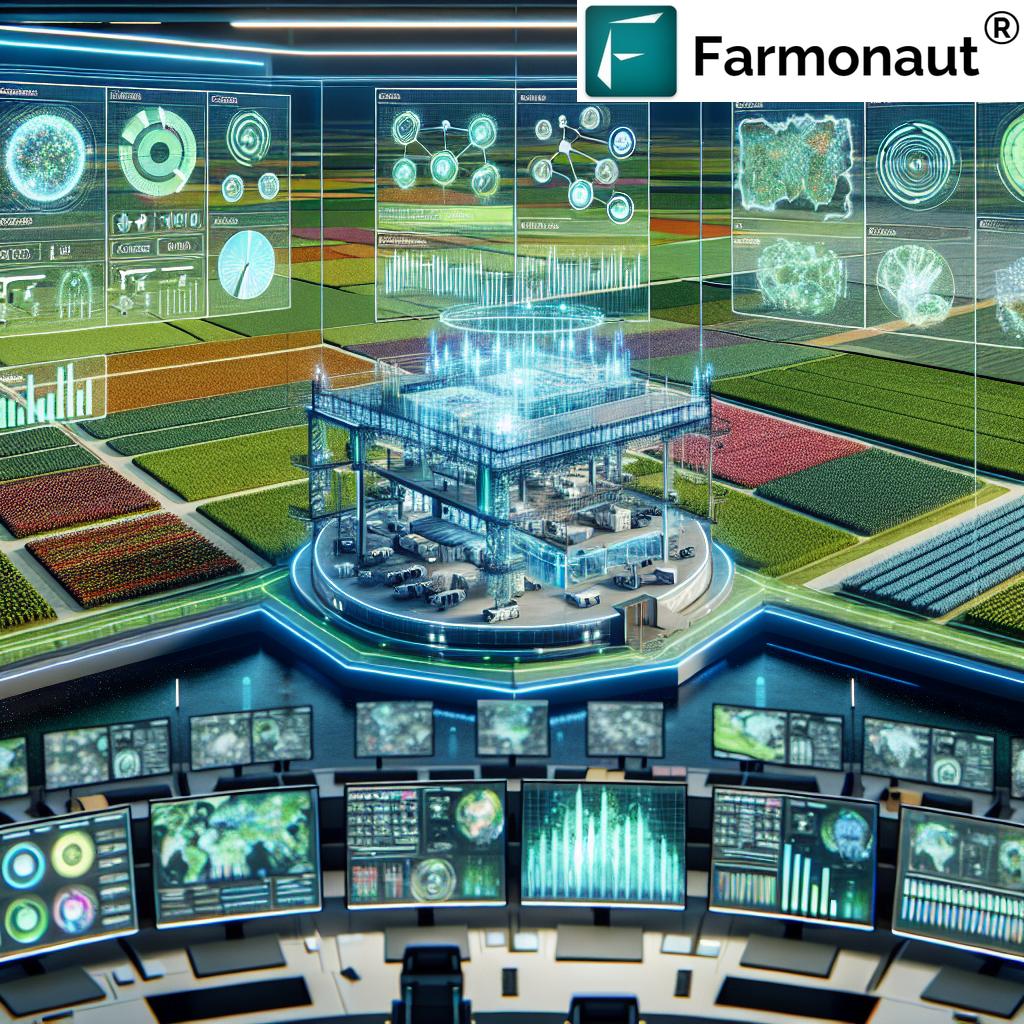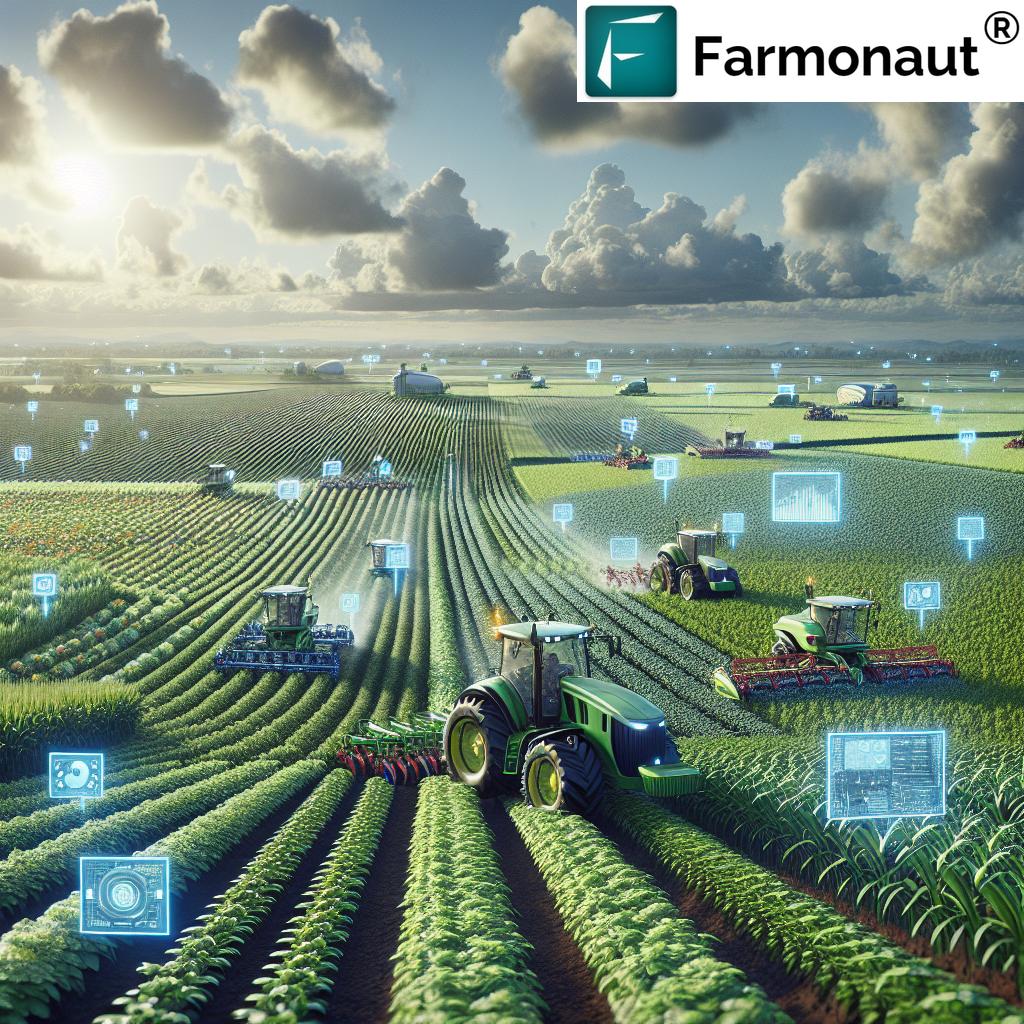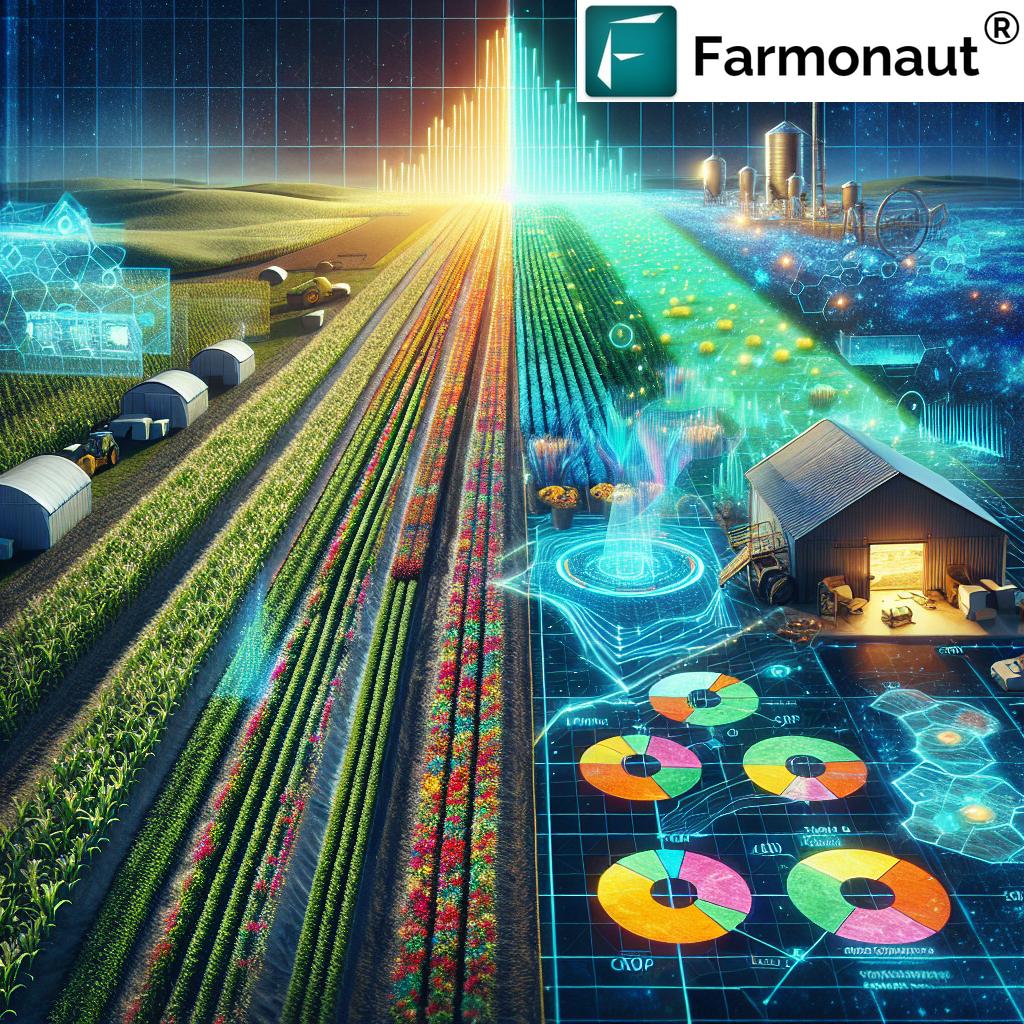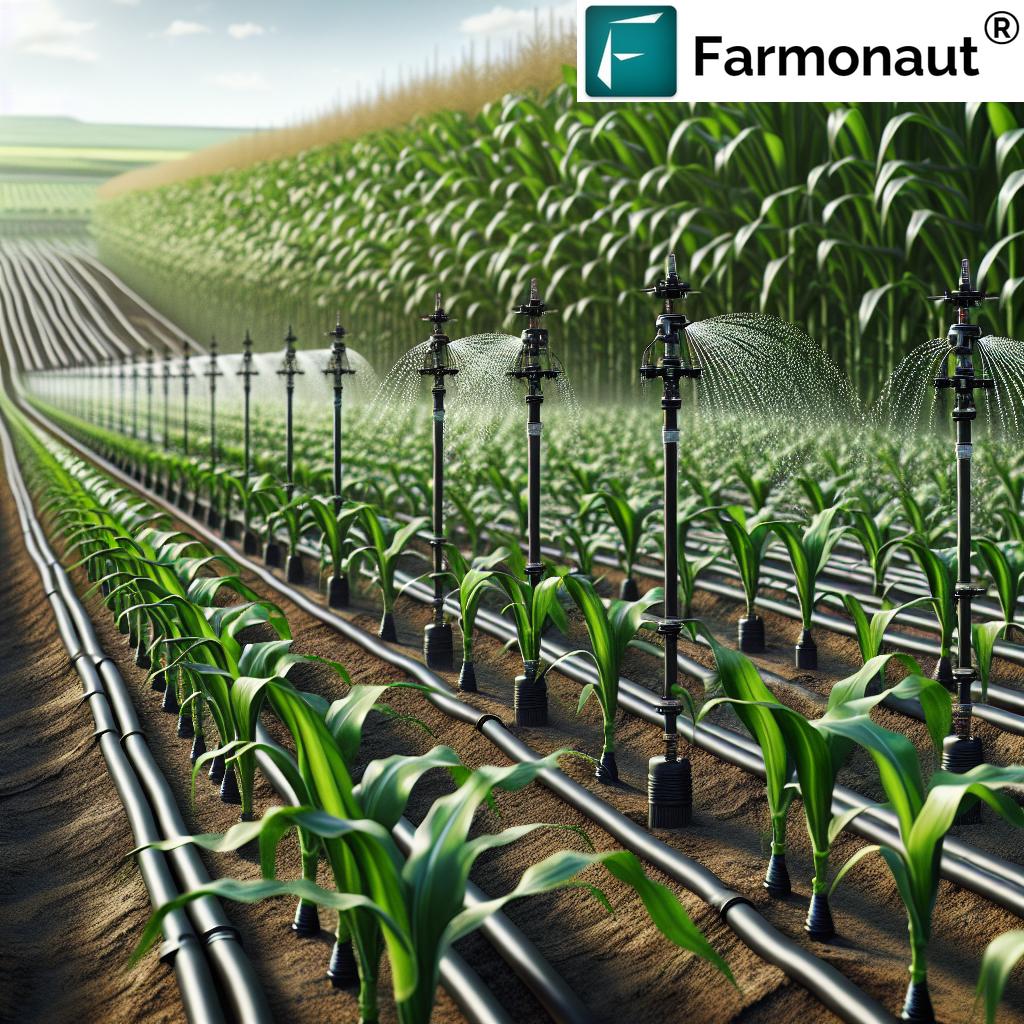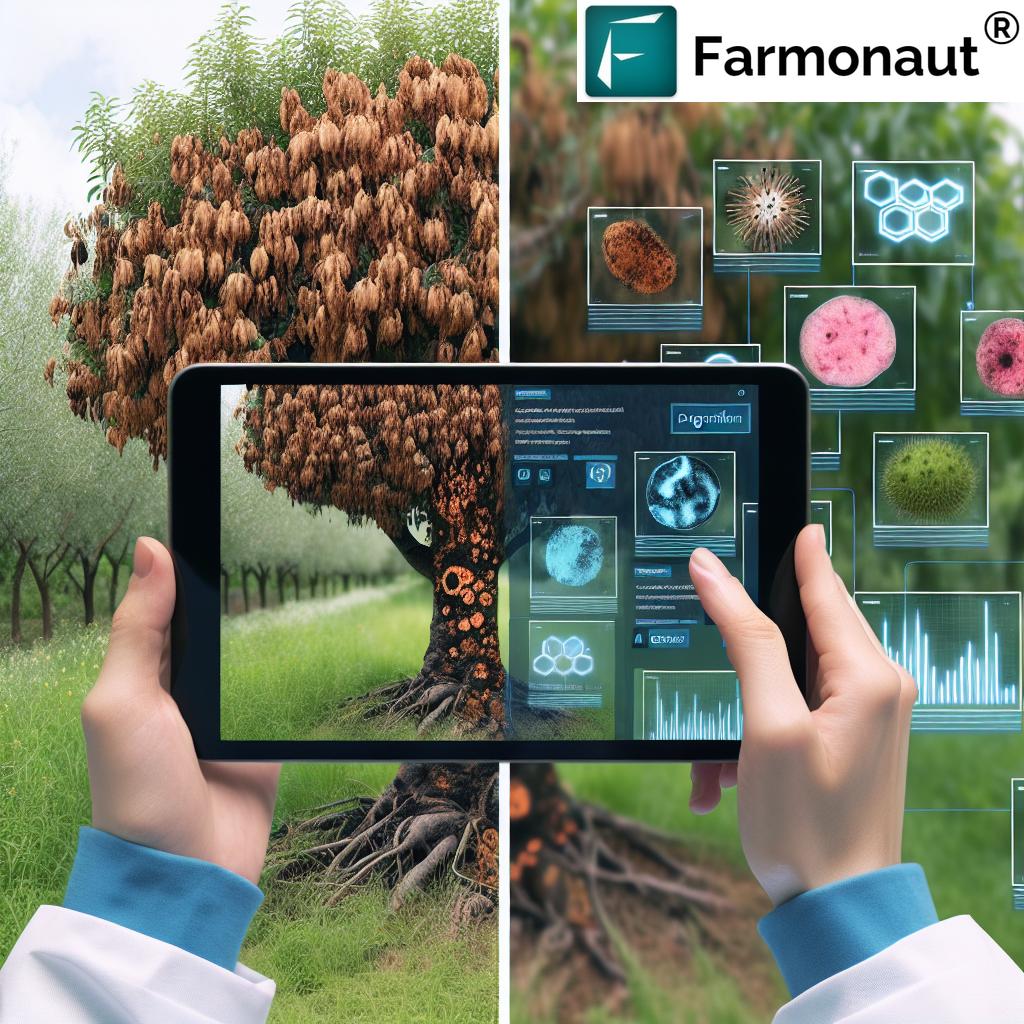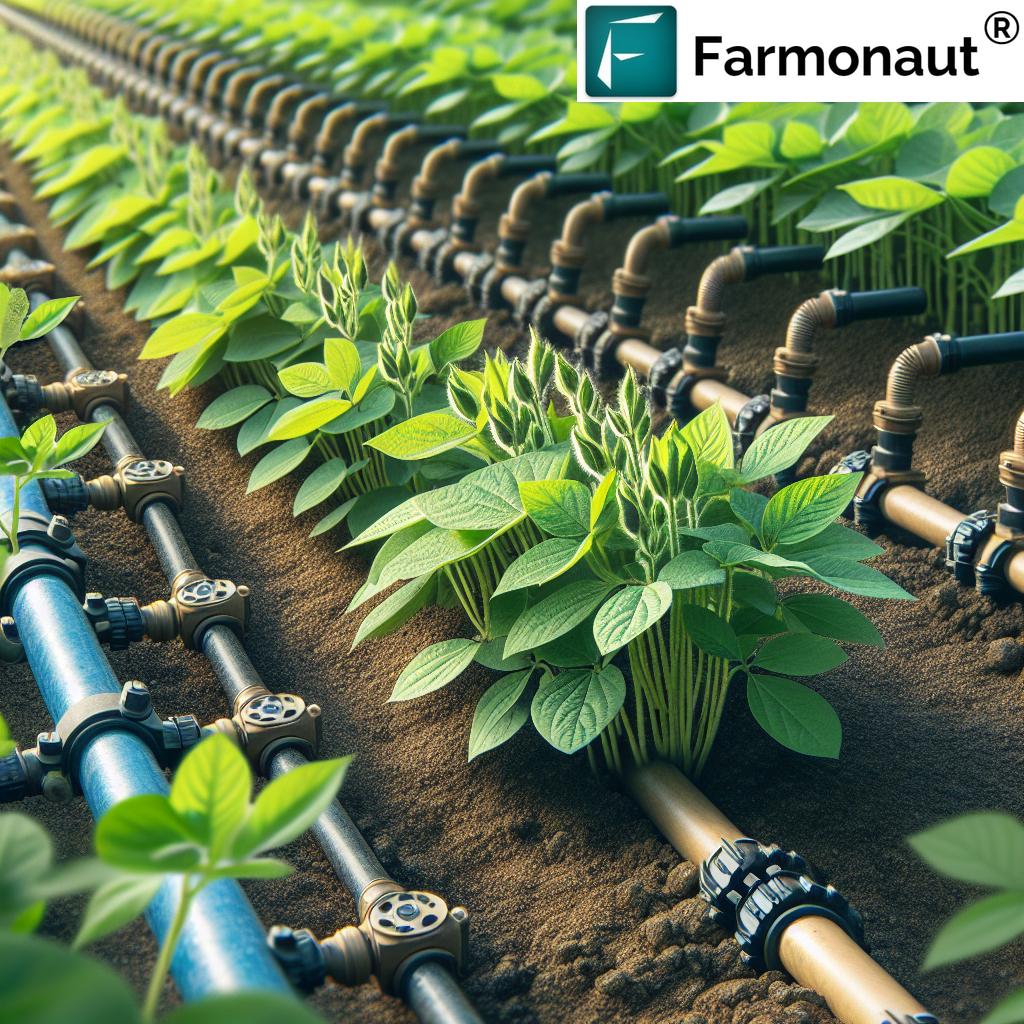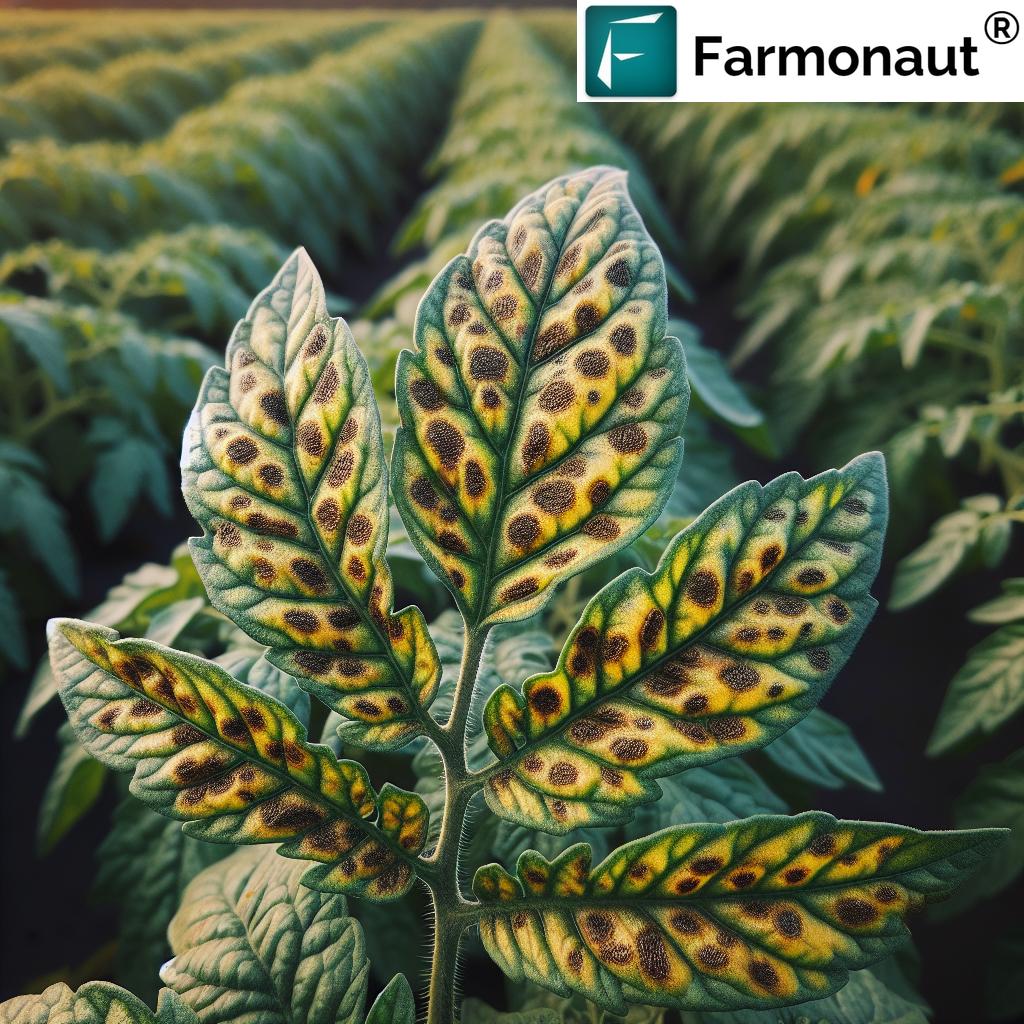Soil Humidity Sensor: 7 Powerful Ways to Boost Crop Yields
“Soil humidity sensors can reduce irrigation water usage by up to 30% in precision agriculture.”
Table of Contents
- Understanding Soil Humidity Sensors in Agriculture
- Types of Soil Humidity Sensors
- Key Applications: How Soil Humidity Sensors Revolutionize Agriculture
- 7 Powerful Ways Soil Humidity Sensors Boost Crop Yields
- Integration with IoT, AI & Modern Technologies
- Comparison Table of Soil Humidity Sensor Benefits in Precision Agriculture
- Farmonaut: Pioneering Satellite-Based Precision Agriculture
- Challenges & Considerations in Using Soil Humidity Sensors
- Frequently Asked Questions (FAQ)
- Farmonaut Subscription Plans
- Conclusion
In the fast-evolving world of modern agriculture, the ability to make informed decisions rapidly and accurately can determine the success or failure of a farming season. Among the game-changing technologies reshaping the industry, soil humidity sensors—often referred to as soil moisture sensors—stand out for their capacity to empower farmers to optimize irrigation, conserve water, and improve crop yields.
If you are invested in precision agriculture or looking to transform your agricultural practices with actionable data, understanding the spectrum of soil humidity sensors, their applications, and their integration with IoT soil monitoring solutions is crucial. This comprehensive guide will demystify the science, explore the benefits, and outline 7 powerful ways these sensors are boosting yields and sustainability in farms worldwide.
Focus Keyword: Soil Humidity Sensor
Understanding Soil Humidity Sensors in Agriculture
Soil humidity sensors sit at the heart of precision agriculture technologies. These sensors are pivotal in enabling real-time soil moisture monitoring, allowing us to measure the water content present in the soil at any given moment. Whether we’re managing expansive croplands or focusing on smallholder plots, these tools help us make decisions that directly impact crop health, resource use, and yield [source].
In agriculture, water is both a precious resource and a major cost. Applying too little can stress plants, while over-irrigation can wash away nutrients, invite disease, and inflate expenses. The traditional way—”watering by feel”—can no longer keep up with the need for efficiency, conservation, and sustainability.
Soil moisture sensors address these issues by:
- Providing accurate real-time data on moisture levels
- Enabling precise irrigation management
- Empowering us to make data-driven decisions that promote sustainable and profitable farming
With real-time soil moisture monitoring, we no longer need to guess; we can act with confidence, conserve resources, and strive for optimal yields with every growing season.
Types of Soil Humidity Sensors: Understanding the Technology
A wide range of soil moisture sensors are available, each with unique principles and application techniques. Here, we break down the types most relevant to modern precision agriculture:
-
Capacitive Sensors:
- These work by measuring the dielectric permittivity of soil—a value that increases as moisture content rises. Consisting of two metal rings forming a capacitor, with the soil acting as the dielectric medium, their output (capacitance) is directly correlated to soil humidity. [More]
-
Resistive Sensors:
- By utilizing electrical resistance between two electrodes inserted into the soil, these sensors detect moisture as a decrease in resistance. The higher the water content, the more easily electricity is conducted—resulting in a lower resistance reading [More].
-
Time Domain Reflectometry (TDR) Sensors:
- These high accuracy sensors send an electromagnetic pulse along a probe, and measure how quickly the pulse reflects back. This “reflection time” is sensitive to changes in soil dielectric constant, and therefore to soil moisture. TDRs are often used in research applications where precision is critical. [More]
-
Frequency Domain Sensors:
- Operating by measuring the frequency of an oscillating circuit embedded in the soil, these sensors detect shifts in response to moisture-induced changes in the dielectric properties of the soil. They are favored for regular monitoring over large areas. [More]
Each sensor type has its strengths, from high accuracy TDR models to cost-effective resistive probes. The best soil moisture sensor for farming depends on your crop, soil type, and budget.
Key Applications: How Soil Humidity Sensors Revolutionize Agriculture
The adoption of soil humidity sensors in agriculture is transforming the industry by automating formerly manual tasks and injecting unparalleled accuracy into farm management. Let’s examine key application areas:
Irrigation Management with Soil Sensors
The most widespread use is in irrigation scheduling. By enabling real-time measurement of soil moisture levels, farmers can:
- Optimize watering cycles, ensuring crops never go water-stressed nor waterlogged
- Reduce water wastage, promoting sustainability and cutting utility costs
- Enhance crop yields and quality by maintaining optimal growing conditions
The impact is dramatic—studies show that soil moisture sensors can lead to water savings of up to 30% compared to traditional irrigation practices [source].
Crop Health Monitoring & Early Stress Detection
Soil moisture variability is a direct cause of plant stress. Using precise monitoring tools:
- We can identify drought stress and react before irreparable yield losses
- Maintain consistent moisture conditions for optimal growth
- Reduce disease risk associated with overly wet or dry soils
Precision Agriculture Technologies
The integration of soil moisture sensors with other data-driven tools—like weather stations and IoT platforms—enables big leaps in efficiency, profitability, and sustainability. By harnessing satellite data (like Farmonaut), AI-driven advisories, and blockchain traceability:
- We achieve data-backed decision making that continuously improves practices
- Optimize resource use at every stage—fertilizer application, pest management, and harvest timing
- Set the foundation for smart, resilient, future-ready agriculture
“Farms using soil moisture sensors report crop yield increases of up to 20% compared to traditional irrigation methods.”
With soil humidity sensors in agriculture and real-time soil moisture monitoring, we turn guesswork into science—yielding consistently higher outcomes.
7 Powerful Ways Soil Humidity Sensors Boost Crop Yields
Let’s explore the precise, transformative mechanisms by which soil moisture sensors and supporting technologies pave the way for improving crop yields, achieving water conservation, and maximizing resource efficiency in agriculture.
-
Optimized Irrigation Scheduling
- By measuring soil moisture levels at multiple depths and locations, soil humidity sensors ensure each crop receives the right amount of water at the right time.
- This precision irrigation prevents both under- and over-watering, improving yield and resource use efficiency.
- Use case: For crops like corn and soybeans, yield increases of 12–20% and water use reductions of 20–30% have been documented with smart sensor-based irrigation [source].
-
Early Crop Stress Detection
- Continuous monitoring enables us to detect water stress early, before obvious plant wilting or discoloration occurs.
- Addressing hidden deficits immediately protects crop health and ensures steady development toward maturity.
-
Water Conservation in Agriculture
- With the aid of soil moisture sensors, we only irrigate when and where needed, leading to significant water savings.
- This promotes sustainable practices and aligns with modern environmental standards.
- Farmonaut’s satellite-based monitoring can identify zones most at risk for drought—aiding in proactive allocation of scarce water resources.
-
Improved Crop Quality
- Consistent soil moisture conditions are crucial not only for yield but also for crop quality, affecting attributes like size, color, flavor, and storability.
- Uniform irrigation, informed by sensor data, helps us achieve exceptional outcomes for high-value crops.
-
Cost Savings per Acre
- Optimized irrigation reduces water bills and decreases equipment wear, while minimizing fertilizer leaching and runoff.
- Research suggests $100/acre savings for corn and $50/acre for soybeans annually with sensor-guided irrigation [source].
-
Data-Driven Decision Making and AI Integration
- Collected sensor data can be integrated with weather, satellite, and historical datasets—empowering advanced analytics, AI-driven forecasts, and automation.
- Platforms like Farmonaut Jeevn AI Advisory help translate complex datasets into actionable insights for farmers worldwide.
-
Long-Term Soil Health and Sustainability
- Maintaining optimal moisture conditions year-over-year supports healthy soil biology, reduces compaction, and prevents salinity build-up.
- Supporting sustainable agriculture not only boosts yields season-to-season but preserves farm productivity for the future.
As you can see, incorporating soil moisture sensors and cloud-connected IoT soil monitoring solutions into farming operations yields financial, agronomic, and environmental rewards.
Integration of Soil Humidity Sensors with IoT, Weather & AI Technologies
The benefits of soil moisture sensors are amplified when we fully leverage modern integrations. Here’s how advanced technology platforms drive results:
-
IoT Soil Monitoring Solutions:
- Wirelessly transmit real-time soil data to the cloud, allowing remote monitoring and automated alerts.
- Support large-scale deployment across expansive acreage with minimal manual intervention.
- Learn how IoT improves irrigation precision.
-
Weather Stations Integration:
- Combine soil moisture sensor data with local weather (temperature, precipitation) for a 360-degree view of crop water needs.
- Enables dynamic scheduling, adjusting to rainfall and temperature fluctuations to save water without risking crop health.
-
Advanced Data Analytics and AI:
- Platforms like Farmonaut Jeevn AI process real-time satellite, sensor, and weather data to issue personalized, predictive farm advisories.
- Cloud-based dashboards visualize data and trends, supporting smarter, more confident decision-making.
-
Blockchain Traceability:
- Secure, verifiable records of soil and resource management that build consumer trust and enable certification for premium markets.
- Explore Farmonaut’s traceability solutions and benefits.
By seamlessly connecting sensor networks to digital platforms, we experience autonomous, always-on farm management—driving up yields while shrinking our environmental footprint.
Key Capabilities Provided by Soil Humidity Sensors in Agriculture
- Conduct soil moisture level monitoring down to the root zone, not just the surface
- Identify soil heterogeneity and microclimate zones within a field for targeted interventions
- Support variable rate irrigation and fertigation practices to maximize both yield and efficiency
- Enable historical comparison of moisture content trends to validate the long-term impact of agronomic decisions
- Integrate with large-scale farm management tools for comprehensive project oversight
Whether for smallholders or industrial agri-enterprises, the application range is vast and transformative.
Comparison Table of Soil Humidity Sensor Benefits in Precision Agriculture
| Application Area | Estimated Impact (%) | Sensor Technology Involved | Benefits Explained |
|---|---|---|---|
| Irrigation Efficiency | 20–30% water reduction | Capacitive, Resistive, Frequency Domain | Real-time monitoring minimizes over-watering and runoff, directly reducing utility costs and environmental impact. |
| Crop Yield Improvement | 10–20% yield boost | TDR, Capacitive, IoT-Integrated Sensors | Consistent moisture levels increase nutrient uptake, reducing stress and maximizing growth potential. |
| Water Conservation | Up to 30% reduction in usage | Resistive, Capacitive, IoT Devices | Sensors help target water applications, supporting sustainable practices and protecting water tables. |
| Early Stress Detection | 90% reduction in undetected stress events | TDR, Frequency Domain, Capacitive Sensors | Immediate alerts enable farmers to act before visible symptoms manifest, protecting yield and quality. |
| Cost Savings per Acre | $50–$100 per acre (corn/soybeans) | Integrated Sensor Networks, IoT, AI | Enhanced efficiency cuts irrigation frequency and auxiliary expenses like fuel, fertilizer, and maintenance costs. |
This table summarizes why smart, sensor-driven agriculture is sweeping the globe and why adopting soil humidity sensors is essential for farms aiming for competitiveness and long-term viability.
Farmonaut Subscription Plans
Elevate your farming strategy with Farmonaut’s affordable, scalable, and powerful satellite-based precision agriculture platform. Access real-time crop health, soil moisture, resource analytics and more through a mobile, web, or API interface—tailored for both individual farmers and agribusinesses.
API for custom integrations: Farmonaut API | Developer Docs
Farmonaut: Pioneering Satellite-Based Precision Agriculture
Farmonaut delivers a suite of cloud and app-based solutions that democratize real-time insights for every farm, anywhere.
Key Farmonaut value propositions:
- Satellite-Driven Crop & Soil Analysis: Use advanced NDVI, soil moisture mapping, and diagnostics to zero in on issues before they impact yields.
- Jeevn AI Advisory: Get actionable, customized advice for irrigation, fertilization, and crop management—all backed by AI and satellite data.
- Blockchain-Based Traceability: Ensure secure, transparent supply chains with product traceability—crucial for quality assurance and global exports.
- Resource Management Tools: Optimize fleets, inputs, and operations using fleet management solutions designed to cut costs and boost safety.
- Carbon Footprinting: Monitor and reduce your farm’s environmental impact with easy-to-track carbon footprint analytics.
- Access to Crop Loan & Insurance: Streamline loan approval and insurance for your fields with reliable satellite-based verification—empowering more farmers to secure funding affordably.
- Solutions for All Scales: Whether it’s large-scale farm management or crop, plantation, and forest advisory, Farmonaut adapts for organizations of any size.
Unlike traditional tools, Farmonaut’s satellite and digital first approach makes precision agriculture affordable and accessible to everyone.
Challenges & Considerations with Soil Humidity Sensors
Though the benefits are immense, farmers adopting soil humidity sensors must consider these practical factors:
- Calibration for Soil Type: Sensor output can vary based on local soil properties. Proper calibration is crucial to ensure accuracy—especially in soils with unusual textures or high mineral content.
- Maintenance: Sensors require periodic cleaning, battery replacement, and routine checks to ensure long-term performance.
- Initial Costs vs. ROI: Sophisticated sensor networks and automation systems demand upfront investment. However, the long-term cost savings per acre, yield increases, and risk reduction typically justify the expense.
- Integration Complexity: For maximum value, sensors should be part of an integrated digital ecosystem—working with satellite data, mobile apps, APIs, and analytics platforms.
Overcoming these challenges leads not just to better yields, but to a more sustainable and resilient food system.
Frequently Asked Questions (FAQ)
A soil humidity sensor provides electronic, real-time data on soil moisture levels, compared to manual “feel” or visual checks. Sensors are far more accurate, scalable, and allow for continuous, automated farm management.
How do soil moisture sensors actually measure soil water content?
Depending on type, soil moisture sensors use capacitance (measuring dielectric constant), resistance (electrical conductivity), time domain reflectometry (measuring pulse reflection), or frequency domain methods. Each correlates sensor readings to actual soil water content.
Are these sensors suitable for all types of crops and soils?
Generally, yes. With correct calibration and installation depth, soil humidity sensors are effective across major crops (corn, soybeans, wheat, vegetables, etc.) and soil types—from sandy to clayey. Always follow manufacturer guidelines for optimal results.
What are the long-term maintenance requirements for soil moisture sensors?
Regularly inspect for buildup or corrosion, check batteries/power supplies, and recalibrate annually (or as specified). Many IoT systems will issue alerts if a sensor’s data appears anomalous.
Can soil humidity sensors be integrated with other digital farm tools?
Absolutely. Modern sensor platforms often offer API or app integrations, and can be linked to satellite monitoring tools (like Farmonaut), weather stations, and even automation systems for irrigation and fertigation.
What factors should influence my choice of the best soil moisture sensor for farming?
Consider your accuracy needs (small garden vs. commercial acreage), the type/texture of your soil, your budget, and your ability to maintain or calibrate the device. For most applications, capacitive or IoT-enabled sensors balance cost and performance excellently.
Conclusion
Soil humidity sensors are no longer a futuristic innovation—they are the cornerstone of modern precision agriculture. By providing real-time soil moisture insights, they help us optimize irrigation management, conserve water, boost yields, and ensure consistent crop quality.
Their benefits scale dramatically when paired with IoT soil monitoring solutions, weather stations, and satellite-driven analytics platforms like Farmonaut. This integrated approach empowers us to pursue sustainable farming practices that meet today’s demands while protecting tomorrow’s productivity and environment.
Whether you are a smallholder managing a handful of acres or a large agribusiness stewarding thousands, adopting soil humidity sensors in agriculture is your passport to data-driven success, increased profitability, and responsible environmental stewardship.
Transform your farm—start leveraging soil moisture sensors, digital apps, and real-time analytics with Farmonaut today.







